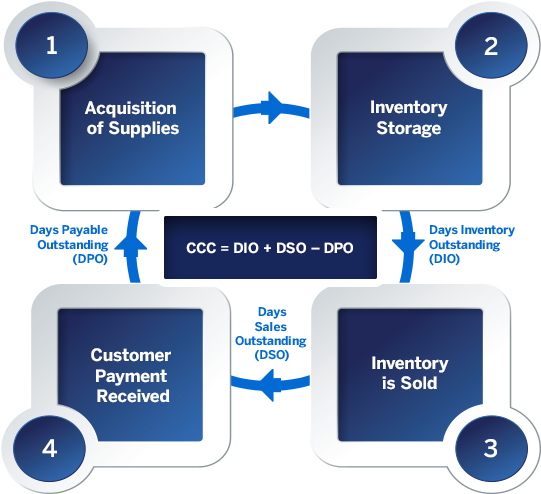Working Capital Solutions
Working capital support can help you expand and grow your business. See how American Express® can provide benefits to help you maintain strong cash flow.
What is Working Capital?
Working capital is a measure of the difference between a company’s current assets and outstanding liabilities. In simple terms, working capital is the money available to meet your current, short-term obligations and fuel your business.
Fund your day-to-day operations
Working capital solutions allow you to pay your suppliers, purchase inventory, and cover any immediate expenses.
Grow your business
Maintaining good working capital helps keep your business financially strong.
Working capital allows companies to calculate the operating liquidity of their business, by measuring the number of expenses they generate compared to their current assets. This metric shows how a company is paying off its obligations in a period (for example 3 months or one year) or business cycle.
In other words:
- Working capital is the money used to cover all of a company's short-term expenses, including inventory, payments on short-term debt, and day-to-day expenses—called operating expenses.
- Working capital is the money that companies use to operate and conduct their organizations.
How Does Working Capital Work?
Working capital is the cash that companies use to operate and conduct their operations. Effective working capital management ensures that a company always maintains sufficient cash flow to meet its short-term operating costs and short-term debt obligations.
The right balance is important: if a company has insufficient cash to pay for its current expenses, it may have to file for bankruptcy, sell off assets, reorganize, or liquidate. Conversely, accumulating too much cash and liquid assets is not an efficient way for a company to manage its resources.
Working capital ratio = Current assets / Current liabilities
If the working capital of your company is less than 1, it can indicate potential future liquidity problems. When your business’ working capital ratio is between 1.5 and 2, it means that your company has more current assets than liabilities and is an indicator of stable financial ground in terms of liquidity. A ratio higher than 2 is not necessarily better, as it might mean your company’s assets aren’t being leveraged to grow your business.
CASH CONVERSION CYCLE
An important measure of your company’s working capital is your cash conversion cycle (CCC), which measures the number of days it takes your company to:
- convert inventory to sales (Days Inventory Outstanding [DIO]) and
- receive payment for sales (Days Sales Outstanding [DSO]),
and then subtracts the number of days it takes to:
- pay your vendors for supplies (Days Payable Outstanding [DPO]).
Ideally, companies want to have a shorter cash conversion cycle to demonstrate healthy revenue against expenses (most Fortune 500 companies aim at reaching negative CCC). You can reduce your cash conversion cycle by selling inventory more efficiently, increasing speed of customer payment, and adjusting the timing of your vendor payments. Increasing your liquidity by reducing your CCC can allow you to have more working capital available to invest directly into your business.

Cash Conversion Cycle (CCC): Time company takes to convert resources into cash.
Days Inventory Outstanding (DIO): Days it takes to sell entire inventory.
Days Sales Outstanding (DSO): Days it takes to collect payments from customers.
Days Payable Outstanding (DPO): Days it takes to pay back vendors.
Let us help you find the right working capital option for your business.
Request a call back from a Specialist or call us on 1-877-891-0821 Monday to Friday
Frequently Asked Questions
Why is working capital important?
Working capital is important because it is an indicator of a business’ ability to pay off short-term expenses or debts. However, excess working capital indicates that assets are not being invested for the long term nor being put to use to support the growth of the business.
How does Amex pay my vendor?
With our Supplier Payment Solutions, we pay your verified vendors on your behalf. For example, when a vendor submits an invoice for payment, you can submit the payment to our Buyer Initiated Payments (BIP) portal so that American Express can pay the vendor. Once you approve a payment, the supplier will promptly receive the funds in their account, and you will get an electronic confirmation file. This payment solution helps your business to have more cash on-hand between billing periods and optimize your working capital with Days Payable Outstanding (DPO).
Can I repay the funds before the due date?
Yes, you can repay a funding request in full before the due date without any early payment penalties or discounts.

This article is intended for general informational purposes only and does not constitute legal advice or an opinion on any issue. It should not be regarded as comprehensive or a substitute for professional advice.
®,™: Used by Amex Bank of Canada under license from American Express



